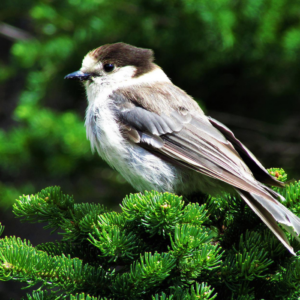Update from the Field: Nature Canada’s Ted Cheskey Reports from Peawanuck
| Cheskey stayed with the kind owners of this Northern store in Peawanuck, Ontario |
Ted Cheskey, Nature Canada’s manager of bird conservation programs, is in Peawanuck, Ontario this week, a Cree community located near the confluence of the Winisk and Shamattawa Rivers, about 35 km from the shores of Hudson Bay. Population, 139 souls. Ted is there to explore opportunities to work with the Cree to protect migratory birds of the Ontario and Quebec boreal region, by identifying shared conservation priorities around birds and Important Bird Areas. He took a moment to send us this post:
It’s 9am on Friday, January 28th and I’m in Peawanuk, Ontario.
The sun is barely rising over the south-eastern horizon behind the banks of the Winisk River. It is dead cold – a chilling minus 38. A raven squawks in the distance, and the quiet is broken by the chainsaw-like sounds of snowmobiles starting up. Other than the raven and the family of Gray Jays that sit still atop stunted spruce trees like Christmas ornaments, no other birds appear to be around. This is in sharp contrast to the spring, summer and fall when birds abound – tens of thousands of Snow Geese and Canada Geese nest closer to the Hudson Bay Coast.
Peawanuck is a relocated community. The community of Winisk experienced severe flooding about 25 years ago, and as a result, residents formed the new community of Peawanuck, further upstream. The Community is preoccupied here with cleaning up old military and radar bases. The military legacy here is hundreds of rotting barrels filled with PCBs and other contaminants.
The Cree of Peawanuck, and other communities along the coast, are very connected to the land. They hunt snow geese in the spring, geese in the fall, as well as other wildlife such as caribou and sturgeon.
Numerous globally significant Important Bird Areas (IBAs) are located along the coast, and many are recognized as staging areas for thousands of shorebirds on their epic migrations to South America. Other IBAs on the Hudson Bay and James Bay coasts are recognized for the waterfowl – mainly geese and some species of ducks – that they support. These birds breed, molt and feed there, fattening up for their long migrations – they also provide an essential source of food to many families in the coastal communities.
Nature Canada would like to see these important habitats protected from all types of industrial development that we believe will one day be eyeing this coastline.
Right now, life goes on as usual, and issues such as the clean-up of the old bases, remain the priority.
Our bird conservation efforts in the James Bay and Hudson Bay region are supported by The Ivey Foundation.



